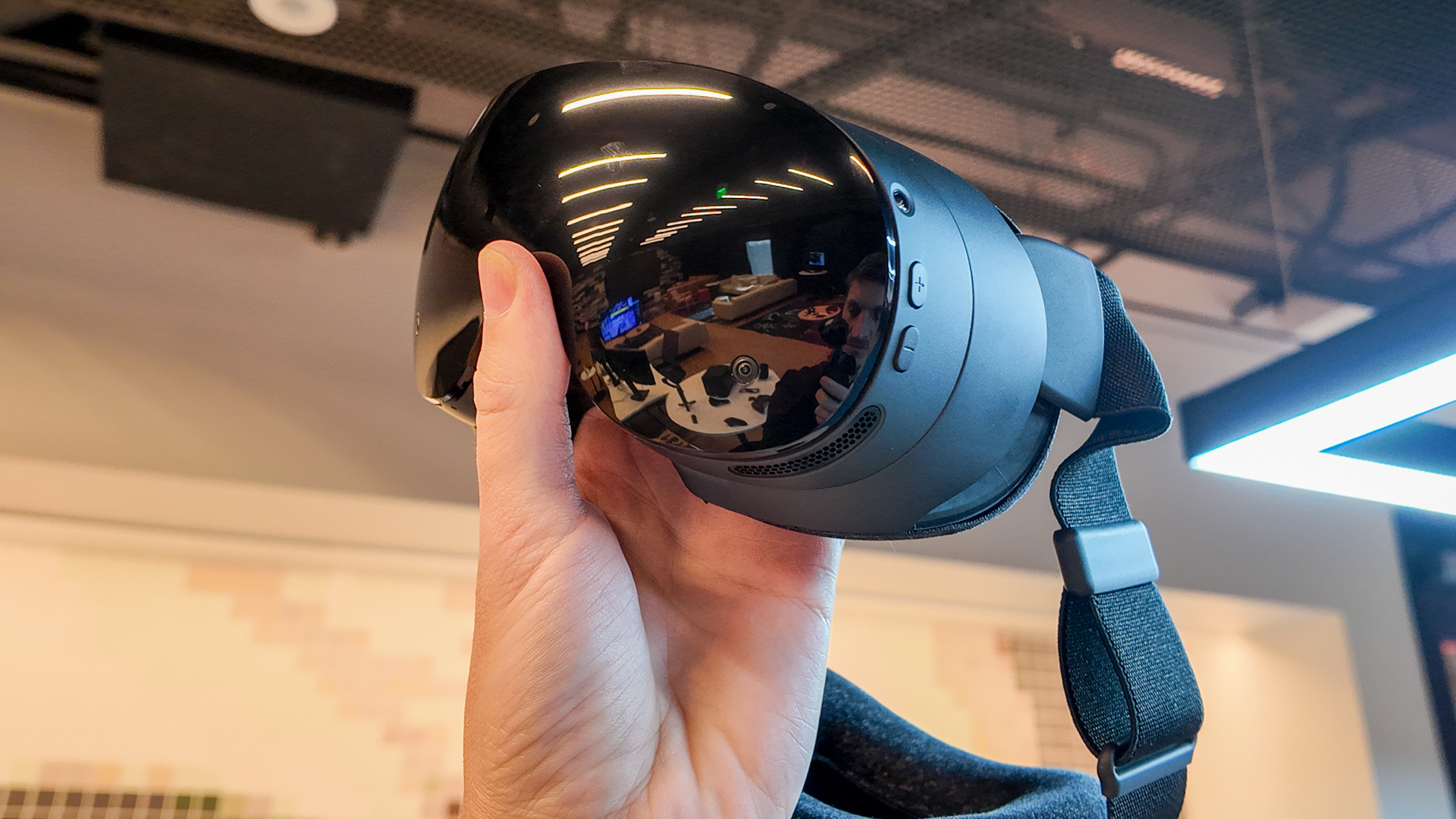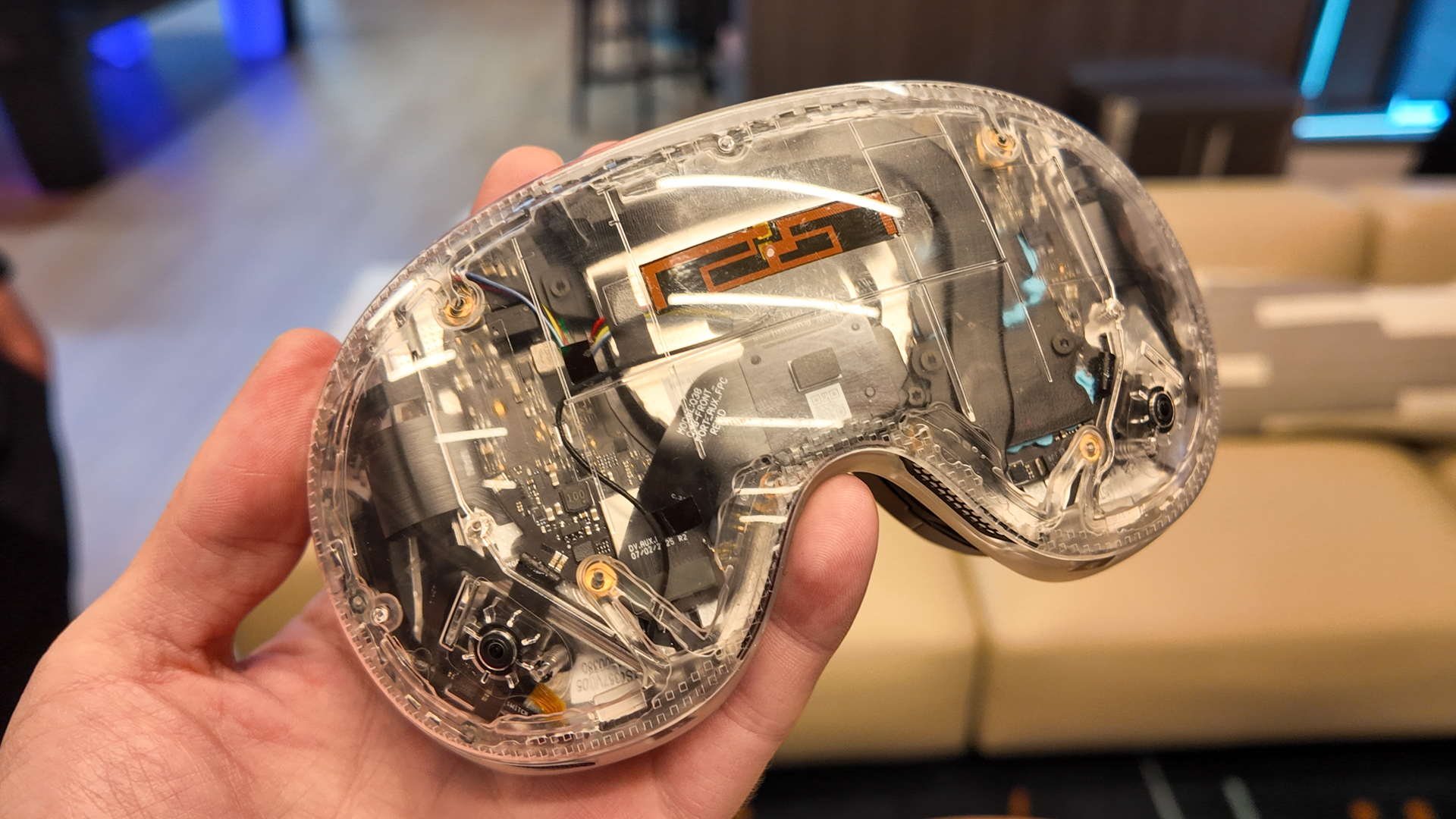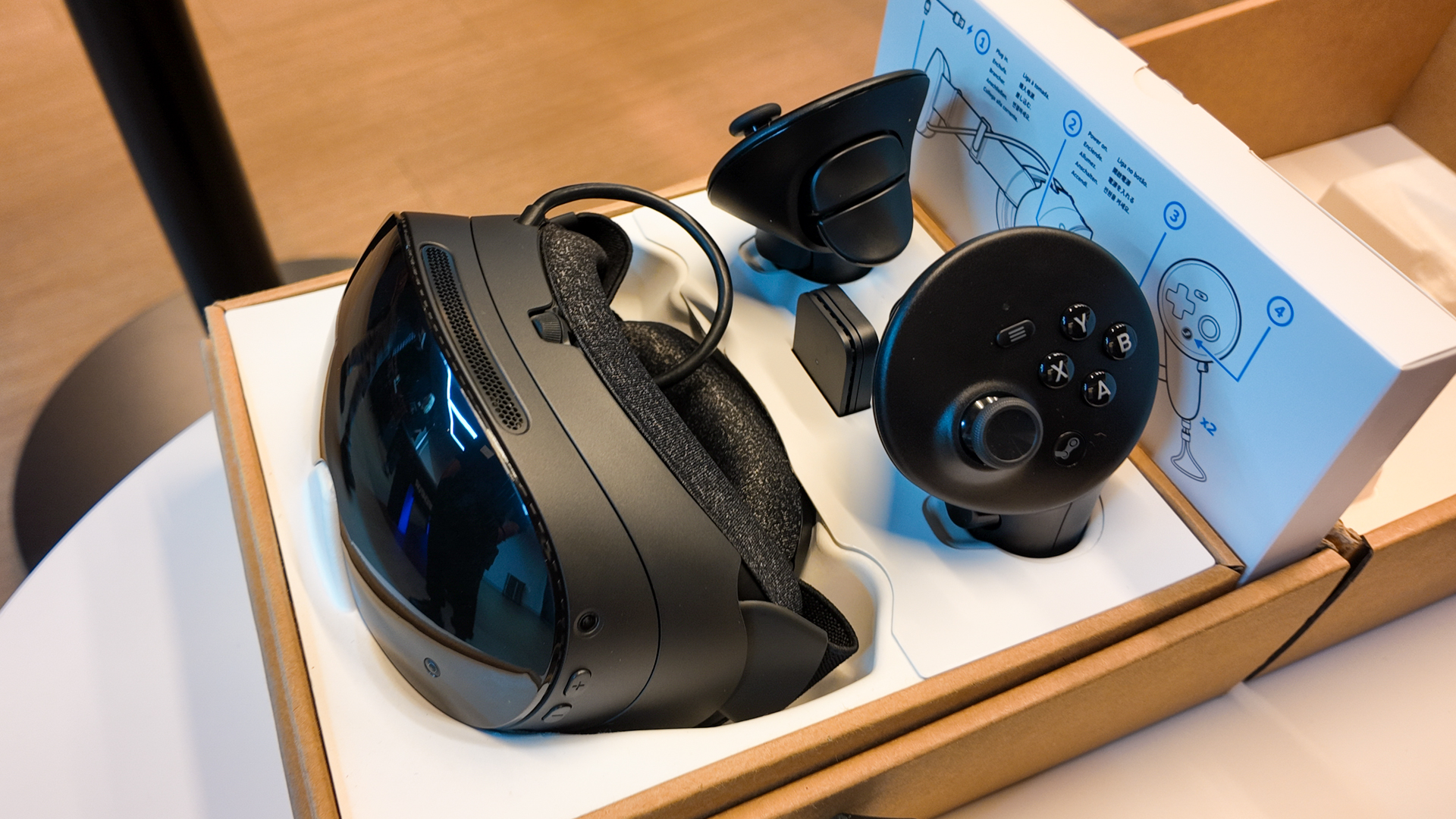I am very excited about the Valve Steam Frame. It’s packed with a beefier processor, higher-capacity RAM, and a better Wi-Fi chip than Meta’s top device, the Meta Quest 3, and this all makes me think Valve has the guts to step into the ring with the company previously known as Facebook.
This is before mentioning that Valve seems to have a bit of a hidden blade up its sleeve in the form of an included USB dongle that connects to a specially sectioned antenna in the headset for wireless streaming. This, combined with foveated streaming, means that the headset can pick up on where you’re looking, focus all of the higher quality juice into that section, and render everything at a lower quality.
And that’s not the only selling point for the Steam Frame. Valve’s Lawrence Yang told us it “represents a fundamental shift in the way that we look at VR.” For the first time, SteamOS is on an Arm chip in the Frame. It can wirelessly connect to your rig to play your VR games, but also play non-VR games through the same controllers. It’s all hitting the right notes for me.
However, in my excitement for the new headset, I spotted a single note in the specs sheet that dampens it somewhat: Mono passthrough. This means that, where my Quest 3 has a relatively lifelike vision in technicolor when I’m wandering around or messing with its UI in my real space, the Frame may feel a bit stilted.
One of the most instantaneous upgrades I felt when swapping from the Quest 2 to the Quest 3 was the upgrade in passthrough capability, and it really does improve moment-to-moment use and set-up.
Image 1 of 3

(Image credit: Future)
Image 2 of 3

(Image credit: Future)
Image 3 of 3

(Image credit: Future)
I’ve always found navigating my real-life environment a bit tough in previous headsets, but a quick tap on the side of the head to activate passthrough mode has made the Quest 3 a surprisingly viable headset to wear when untangling wires or otherwise interacting with my space. I can get myself a drink without a little bit of nausea (or taking an age), which was never true of Meta’s previous iterations.
The Steam Frame has the same number of cameras as the Quest 3, though Meta employs two RGB passthrough cameras and four IR cameras, whereas Valve uses four monocular home computer vision tracking cameras and two interior eye tracking cameras.
So, it seems like part of the tradeoff here is eye tracking or better passthrough. The monochrome cameras and IR illuminators in the Steam Frame headset mean it can track in the dark, though.
The Frame, like the Index, has a modular component. The front of the headset has an expansion port, which one could technically use to mod their headset to get colour passthrough. It even supports two 2.5 Gbps camera feeds.
It is worth noting that, while the Index has an expansion slot, it wasn’t really supported by Valve post-release. It was there to allow buyers the choice to mod, and that’s about it. This is to say, while official colour passthrough support could come at some point, I’m not holding my breath.
When talking about this modular system, a Valve engineer told us, “There’s just a lot of perspectives on that, and we agree, which is why we’re not announcing anything today. But you could imagine that the same headset with this type of core module, you could have alternative versions of the head strap that could offer different features to different groups of people.”
Image 1 of 3

(Image credit: Future)
Image 2 of 3

(Image credit: Future)
Image 3 of 3

(Image credit: Future)
Valve’s hot hardware

(Image credit: Future)
Steam Frame: Valve’s new wireless VR headsetSteam Machine: Compact living room gaming boxSteam Controller: A controller to replace your mouse
And better passthrough isn’t just good for rehydrating in the middle of a Beat Saber session. The Quest 3 has an intuitive UI that allows you to drag and drop windows in your physical space that you can interact with. I have, on multiple occasions, popped on the headset, played a game via another screen, and been able to check in with my partner through passthrough without having to take it off.
I haven’t really been convinced by mixed reality gaming thus far, but I certainly don’t think a creative developer can’t use the modest confines of my home to implement something good, too. But ultimately, I think worse passthrough is just an everyday downside. It wouldn’t stop me from using, or even loving the Frame, but it’s a convenience I’ve gotten used to, and would feel like a small step backwards.
As will be the case with almost all conversations around Valve’s upcoming hardware, price is the most important factor in whether or not this change is justified. And XR is not the point of the Frame. It runs SteamOS and is designed for gaming first and foremost. However, if I’m paying close to $1,000 for that privilege, I’d find it hard to stomach such a downside for such a price premium.
Ultimately, compromises need to be made with all kinds of hardware: budget laptop manufacturers opting for 512 GB of storage instead of the 1 TB you’ve come to expect as the bare minimum; graphics card makers sticking with 8 GB of VRAM for their more value-oriented models.
The Steam Frame’s mono passthrough is likely a choice made to allow more in other areas, and whether or not that downside will be worth it all depends on how much Gaben wants me to pay for it all.
&
Best gaming PC 2025
All our current recommendations
Pick a category Best overallCore ComponentsChairs & DesksSystems & LaptopsScreensPeripheralsCases, Cooling & Storage Choose a list Best gaming laptop 2025Best gaming PC 2025Best gaming rigs 2025Best handheld PC 2025Best mini PC 2025  BEST OVERALL 1. HP Omen 35L Check Price
BEST OVERALL 1. HP Omen 35L Check Price  BEST BUDGET 2. Lenovo Legion Tower 5i (Gen 8) Check Price
BEST BUDGET 2. Lenovo Legion Tower 5i (Gen 8) Check Price  BEST COMPACT 3. Velocity Micro Raptor ES40 Check Price
BEST COMPACT 3. Velocity Micro Raptor ES40 Check Price  ALIENWARE 4. Alienware Area-51 Gaming Desktop Check Price
ALIENWARE 4. Alienware Area-51 Gaming Desktop Check Price  BEST MINI PC 5. Minisforum AtomMan G7 PT Check Price Read the full guide: Best gaming PC 2025POWERED BY
BEST MINI PC 5. Minisforum AtomMan G7 PT Check Price Read the full guide: Best gaming PC 2025POWERED BY &&&&&&&&&&&&&&&&&&&&&&&&&&&&&&&&&&&&&&&&&&&&&&&&&&&&&&&&&&&&&&&&&&&&&&&&&&&&&&&&&&&&&&&&&&&&&&&&&&&&&&&&&&&&&&&&&&&&&&&&&&&&&&&&&&&&&&&&&&&&&&&&&&&&&&&&&&&&&&&&&&&&&&&&&&&&&&&&&&&&&&&&&&&&&&&&&&&&&&&&&&&&&&&&&&&&&&&&&&&&&&&&&&&&&&&
&&&&&&&&&&&&&&&&&&&&&&&&&&&&&&&&&&&&&&&&&&&&&&&&&&&&&&&&&&&&&&&&&&&&&&&&&&&&&&&&&&&&&&&&&&&&&&&&&&&&&&&&&&&&&&&&&&&&&&&&&&&&&&&&&&&&&&&&&&&&&&&&&&&&&&&&&&&&&&&&&&&&&&&&&&&&&&&&&&&&&&&&&&&&&&&&&&&&&&&&&&&&&&&&&&&&&&&&&&&&&&&&&&&&&&&
From PCGamer latest via this RSS feed
It’s a shame there’s an entire article here talking about literally the only minor negative I have towards anything about the headset. I guess it’s easier to complain. I don’t think anyone other than this guy is really all that heartbroken. This sounds very First World Problems.


